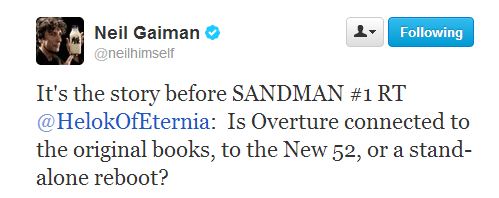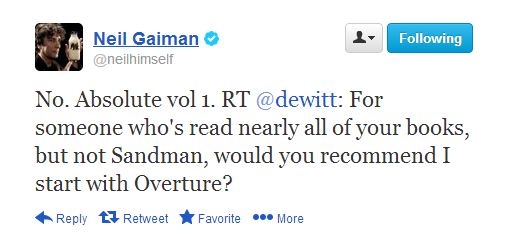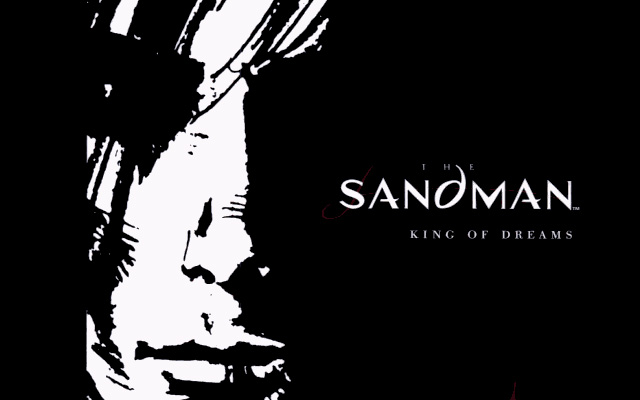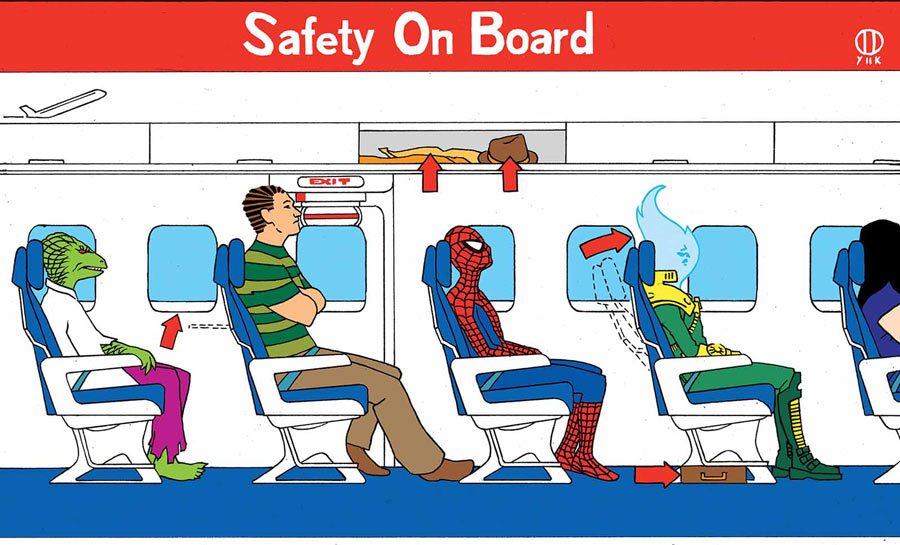COMIC BOOK REVIEW: The Sandman: Overture #1
The Sandman: Overture #1
Story by Neil Gaiman
Art by J.H. Williams III
Colors by Dave Stewart
Letters by Todd Klein
Cover by J.H. Williams III and Dave McKean
Published by Vertigo
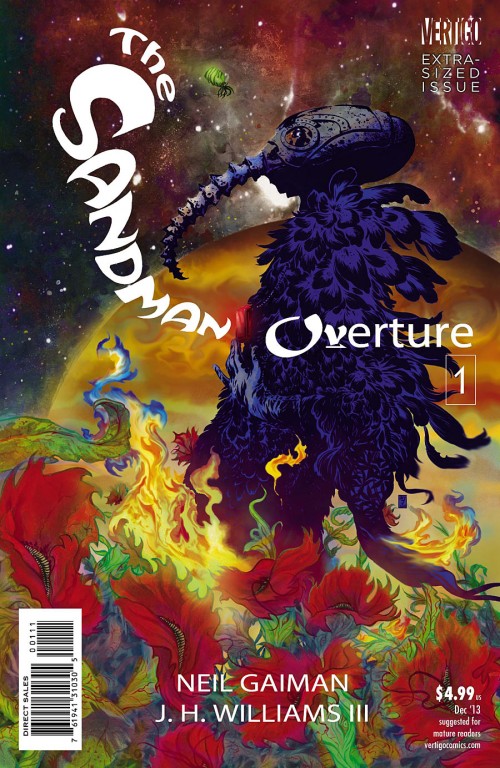
It’s been almost two decades since The Sandman’s main arc ended. We know about Dream being weak, how he got captured, how he returned and took back what is his and changed. That’s that but there’s the lingering promise of more stories within The Sandman universe. Neil Gaiman has talked about how he wanted to deal with a prequel, and now we have it. Vertigo’s The Sandman: Overture #1 introduces us to Dream before the events of Preludes and Nocturnes.
Overall, is it good? Let me detail my answer albeit be wary since there are mild spoilers ahead, despite my sincerest efforts to avoid them.
The book’s already a must-see on its art alone. Dave Stewart‘s colors are just wonderful, allowing the visuals to shift smoothly from one moment to another, differentiating the alien world from the dreamscape and 1900s London. Same could be said with the letters of Todd Klein, the original series’ letterer, giving definite voices to Dream and other characters that appeared. It’s great that the speech balloons still follow what was set in the Sandman series i.e. Destiny and Death having normal italic speeches while Dream gets the balloons with wavy edges, black background and white outline plus the white lettering.
But more than anything else, I’d praise what Williams has done in this book. His work’s splendid, yes, including his sleek and elegant linework that seem tailor-fitted to Gaiman’s story. I love how Williams took liberty in the characters and in structuring the different moments in Gaiman’s story. I’m referring to Corinthian’s eye-teeth and his maniacal appearance evident in close-ups and those shots coming from inside him; or George Portcullis framed by a real portcullis and even has one for a face which happens to be a peculiar literal take on the character; and of course Death dressed ala Mary Poppins, adorned by an ankh brooch. Speaking of Death, I love seeing her again. She’s looking lovely as ever despite lacking the Goth look and the Eye of Horus, sporting a cheerful smile which masked her sullen thought.
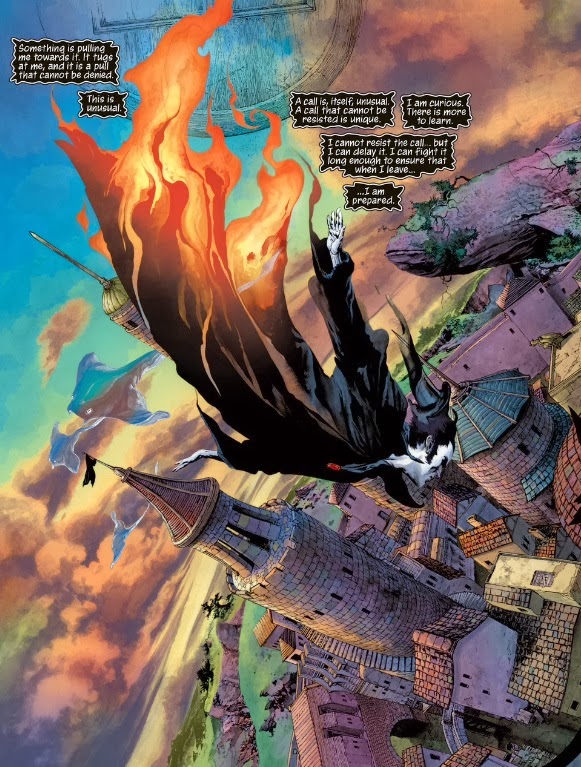
As for the structure I was talking about, there’s the spread page framed by what I didn’t realize sooner as Corinthian’s eye-teeth; Destiny holding up the Cosmic Log, which shows him meeting with his sister Death; then there’s Dream, Corinthian and George Portcullis’ meeting where the linework gives the distinction between the dreaming mortal and the entities he’s seeing in his dream. A keen eye could also catch the words etched on the pages’ edges: “where dreams”, “live now”, “but…”, “sometimes”, “some dreams”, “die”. I’m not certain what they mean as of now but I’m pretty sure I’ve had a tough time spotting them.
There’s no way a person wouldn’t like what he’d see upon opening this book. And I’m not even overstating. Just look at the page where the alien plant wilts away, or the one where Dream drops or flies down to his castle, with a stunning aerial perspective of the Endless’ realm highlighting the castle details and Stewart’s colors that make that world surreal. Oh and did I mention the four-page gatefold illustrating the meeting of every incarnation of Dream? It’s awe-inspiring Dream porn where Williams’ lines blend splendidly with Stewart’s hues. Stunning, eloquent, and just so beautiful.
Now that the visual’s out of the way, let’s move on and talk about the story. The Sandman: Overture happens before Sandman, before Dream’s held prisoner for 70 years. Overture tackles the story, or at least is supposed to since we’re not certain it will accomplish this, of Morpheus’ world before he was captured.
Sandman old-timers and new readers alike might’ve one thing in mind: Is it good? Is it worthy of the Sandman title?
But of course, yes! It might not be perfect, or it’s not at the same awe-inspiring level yet just like what we had during Sandman’s run but it’s a Neil Gaiman story for chrissakes and it’s still really good!
Let’s get down first with what stops this book from being perfect. Here’s a notice to new readers wishing to grab this copy: don’t start with this one. New readers, the book’s out of your league. For now. If I’d take the book as a new reader, without any prior experience with Sandman or any of its related titles, Overture would rack my brains out. The book does not put any effort into giving the characters some depth that a reader could attach to, or any plot that could be easily understood. I bet you there’ll be questions like “Who’s this girl?” and “Who’s the hooded guy?” and so on. Then after their names are brought up comes “Oh, she’s Death. Who the heck is Death?” and “So what’s the deal I he’s called Dream?”
It’ll be futile for a new reader to pick up the book and try to understand who the characters are or what’s going on, which is also the reason why I talked about the art first. The book focuses on contributing to the mythos, with lots of happenings going on but less explanation or background. From the get-go, readers jump to an alien world with a plant talking about his dream, and then the book jumps to London, then the realm of the Endless, back to London and so on. If you don’t want to believe me, perhaps you’d believe Neil Gaiman himself:
And that’s how it goes for all the new readers interested in the book. As for those who have read Sandman, or at least aware of some parts of it, it’s a whole different story. Like I said, Overture’s a prequel so it’s understandable if old readers scratch their heads a little before getting what’s going on. The deal is, something has happened to Dream, as Death tells his brother Destiny. And the event echoes across the entire universe that it prompts all incarnations of Dream to pool together after feeling that something has happened. I’m trying my best not to spoil anything; the point is this event shall later on lead to Dream’s capture and change in The Sandman series.
And that’s where the good stuff comes in together with Gaiman’s storytelling prowess. He puts in together different moments happening across the universe. They might look like separate, disjoint events but sooner or later these disconnected narratives interweave, allowing the readers to connect the dots and realize the bigger picture. And Gaiman does this while employing same mastership of voices and words he utilized back in Sandman. There’s the sci-fi feel when the book starts off in the alien world; then the beautiful poetry mixed in with the introduction of Destiny and his Cosmic Log; and finally the way with words that capture the 1900s ambiance well with Corinthian’s conversation with a young boy. Once again I’m reminded why Sandman’s dubbed “a comic strip for intellectuals”.
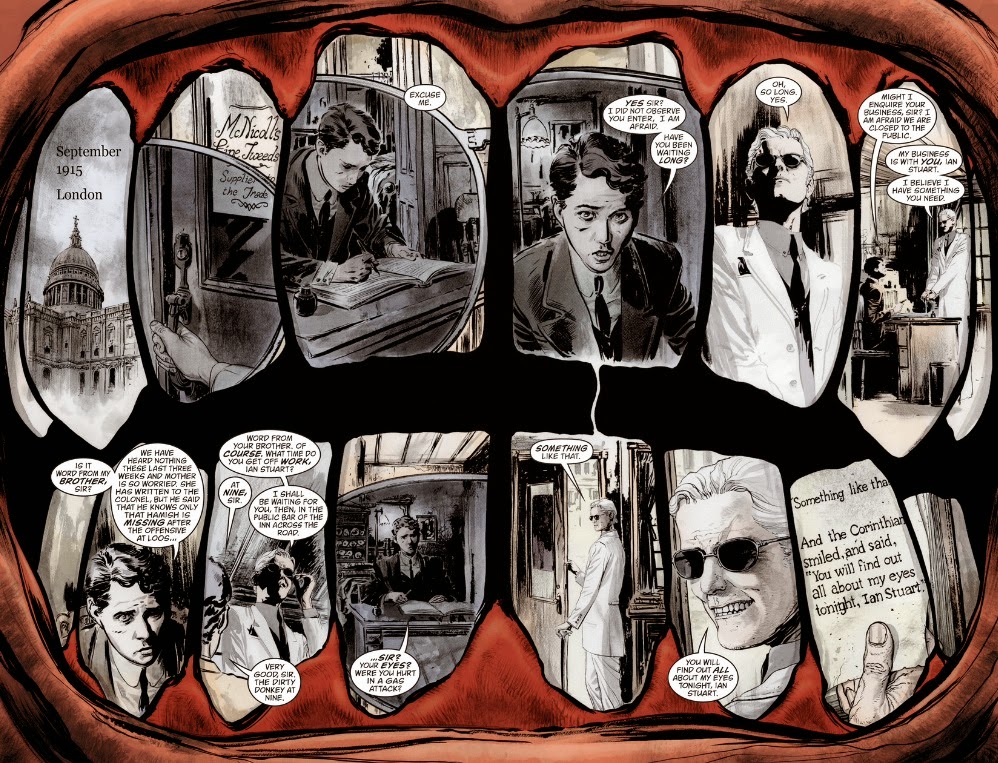
Readers would be delighted with the fact that Gaiman’s able to utilize that seamless connection between his subplots to reintroduce the Endless and old characters while at the same time throwing in new ones. Aside from Dream, Death, Destiny and Corinthian, we get to meet Merv Pumpkinhead and Lucien the librarian, too. The Endless sound sophisticated as ever, Corinthian’s antics display his maniacal personality and brand of darkness, being an eye-eater and all, whereas Merv and Lucien deliver some anecdote and humor. Pair that up with the art and colors, most especially Klein’s letters, voila we have characters that talk with their own voices in this book. As for George Portcullis, it isn’t definite yet whether he’s there to keep the narration moving or if he has his own special role, but his tranquil dream world works well as Dream’s London office, and also as the setting for a major fraction of the book.
It’s a gorgeous book and a striking comeback for Neil Gaiman to Sandman. The Sandman: Overture #1’s the first of a six-issue mini-series so it’s also cloudy how much will get done. There are tons of questions aside from the obvious one regarding what happened to Dream and what future events will transpire that would lead to his capture. “How does the incarnation system really work?”, “Why did Morpheus react that way upon meeting his other incarnations?” Plus there are also those such as “Where are the other Endless siblings?”, “Where is Death’s Eye of Horus make-up and what changed her appearance to the gothic chic we love?”, “What was Corinthian up to before he went AWOL during Dream’s capture?” and so on. There are a lot of things that could be noted and possibilities that could be considered such as the existence of George Portcullis and Dream’s offices and what happened to them, or how Overture would connect with what’s happening in DC.
Also, there were seven ads inside Overture: one each for Dead Boy Detectives, Hinterkind, Coffin Hill, and the upcoming next volume of The Unwritten. There’s also one for Alan Moore’s Promethea. But what I’m particular of are the ads for trades of The Sandman, and another one that featured Black Orchid with Midnight Days, Mr. Punch, and Death: The High Cost of Living in the sidebar. Is Vertigo’s promotion of Gaiman books related to the developments of Overture? Or is it just so that the older books could be brought back along with the waves of this new story? In any case, new readers could use some back reading to catch up and get what’s going on in Overture.
Will Overture turn out to be the story of Dream’s downfall? Or perhaps is it a story of betrayal and tragedy? There’s a long list of questions, possibilities and a lot more things that are yet unclear but that just means there’s a rich world a brilliant mind such as Gaiman’s could play around with for much longer. It might just be a mini-series but the fact is that there’s a strong narrative magnified by splendid artwork so I couldn’t really mind about how many issues are left. Gaiman, Williams, Stewart and Klein are on their top forms and in case they’re not, imagine how much better the series could still be in the next issues.
This book might be difficult to swallow for rookies or even for some veterans, or it may seem different than the original series for some seasoned readers. Still, it’s a book worthy of the price tag. Neil Gaiman’s back, and The Sandman series continues to be an astonishing enduring classic, as if it didn’t enter that long pseudo-hiatus at all.
Once again, special thanks to Comic Odyssey! Visit the nearest branch to grab a copy of this splendid work and catch Neil Gaiman’s comeback!


